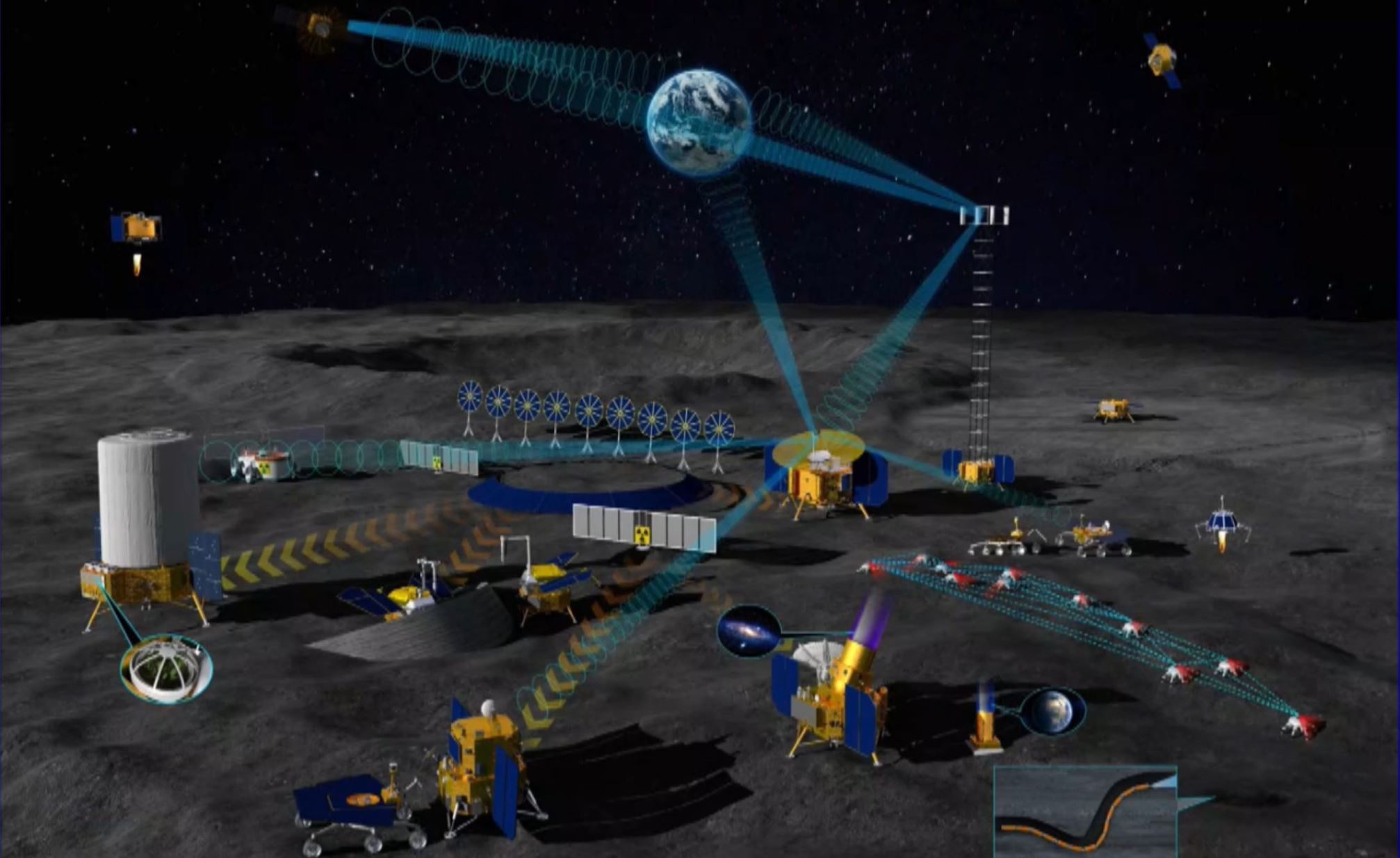HELSINKI — China has laid out its pathway for robotic and crewed lunar and deep space exploration, with a number of missions building towards a permanent moon base.
Three upcoming robotic missions will set in place landers, orbiters, relay satellites and test key technologies needed to begin construction of China’s International Lunar Research Station (ILRS) in the 2030s.
While China is now planning a short-term crewed lunar landing mission before the end of the decade, ILRS will initially be a robotic base that will be permanently habitable after 2035.
China is currently working towards launch of the Chang’e-6, 7 and 8 mission in the coming years to set the stage of the larger moon base initiative, senior space official Wu Weiren told China Central Television (CCTV) after the conclusion of the four-day United Nations/China Global Partnership Workshop on Space Exploration and Innovation in Haikou on the island province of Hainan on Nov. 24.
Chang’e-6, a backup to the successful 2020 Chang’e-5 lunar sample return, will attempt to collect up to two kilograms of material from the South Pole-Aitken Basin on the lunar far side in 2026. The landing is expected to take place at a similar latitude to the 2019 Chang’e-4 landing in Von Karman crater due to engineering constraints.
A new lunar relay satellite will also be launched to facilitate communications with missions targeting the vicinity of the south pole of the moon. Chang’e-7 will launch around 2026 and consist of an orbiter, lander, rover and “mini flying detector,” to study the lunar topography, material composition and environment, with the latter spacecraft to look for the presence of water-ice.
The mission will aim to investigate permanently shadowed areas at the lunar south pole and both the U.S. and China have overlapping target landing areas in the region.
“We hope that Chang’e-7 will use its hopping detector to investigate one or two of those craters and find out whether there is any water inside,” Wu said.
Chang’e-8, currently scheduled for launch around 2028, will be an in-situ resource utilization and 3D-printing technology test mission. The infrastructure launched as part of these missions will serve as a basis to support the larger ILRS initiative.
China is also now working towards a crewed lunar landing before 2030. The mission would use two launches of an under-development new generation crew launch vehicle to send three astronauts to the moon, seeing two of them set down on the surface for around six hours. The requisite spacecraft and lunar lander are in development.
ILRS will see five launches across the early 2030s to put in place n-orbit and surface infrastructure for energy, communications, in-situ resource utilization and other technologies.
These missions will require the lifting capability of the planned Long March 9 super heavy-lift rocket, which officials recently announced has undergone changes in its design to make it reusable. Earlier plans would see the Long March 9 rocket be expendable.
The South China Morning Post also reported that Wu stated China was working on a “new system that uses nuclear energy to address the moon station’s long-term, high-power energy demands.”
Wu has been a strong advocate of such technologies to fuel space exploration, including missions to the edges of the solar system. In August a megawatt-level reactor designed by the Chinese Academy of Sciences passed a key review.
Unveiled in St. Petersburg, Russia, in June 2021, the plan envisions five missions named ILRS-1 through 5 focusing respectively on energy and communications, research and exploration facilities, in-situ resource utilization, general technologies and astronomy capabilities.
“We prepare to work with other countries to build the International Lunar Research Station and appeal to them to join hands with us in conducting the designing and surveying and the subsequent scientific data sharing…. We hope to finish building the ILRS by 2035 and we also hope it will grow to be a national mega science project,” Wu said.
China’s current partner for the endeavor is Russia, which pledges to integrate its planned Luna missions into the initiative as well as contribute with super heavy-lift launcher missions.
China declared its openness to international partnerships for ILRS and deep space missions at the International Astronautical Congress (IAC) in Paris in September, but Russia was not mentioned in the plans.
The omission of China’s main partner was likely due to sensitivity to the fallout from Russia’s invasion of Ukraine, but the situation poses a dilemma for China in its attempt to broaden its cooperation.
Wu also reiterated China’s plans for a near Earth asteroid sample return mission, Mars sample return, sending twin probes to opposite ends of the heliosphere, a mission targeting Jupiter and Uranus, and a planetary defense test.
The latter asteroid deflection mission will include both a survey spacecraft and an impactor, Wu said, targeting an object with a diameter of about 30 meters, earlier revealed as 2020 PN1.
Wu also hinted at even grander plans. “In the next 15 years, I think we should start preparations for sending human beings to Mars and we should leave Chinese people’s footprints on the moon,” Wu said.
